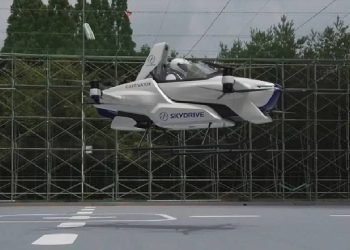A NEW spacesuit upgrade has been proposed that turns urine into drinkable water, which means astronauts won't be forced to pee on themselves during spacewalks.
Researchers behind the new piece of kit say it's a real life 'stillsuit', the futuristic spacesuit from the sci-fi Dune franchise.

Dune's 'stillsuits' absorb and purify water from sweat and urine to recycle it into drinkable water, allowing characters to roam the desert world Arrakis[/caption]


The record for the longest spacewalk is held by James Voss and Susan Helms, for a nearly nine hour long spacewalk in 2001.[/caption]
With today's spacesuits, astronauts have to relieve themselves inside them when conducting spacewalks.
Spacewalks are when astronauts go outside of the International Space Station (ISS) to perform fixes, which can sometimes take hours to complete.
The record for the longest spacewalk is held by James Voss and Susan Helms, for a nearly nine hour long spacewalk in 2001.
Unlike waste water aboard the ISS, the water in urine from spacewalks is not recycled.
Astronauts complained about the peeing protocol on spacewalks for decades, saying its uncomfortable and not very hygienic.
Since the late 1970s, traditional Nasa spacesuits have used a so-called maximum absorbency garment (MAG) for waste management.
It's essentially an adult diaper made of superabsorbent polymer – and has given astronauts infections in the past.
“The MAG has reportedly leaked and caused health issues such as urinary tract infections and gastrointestinal distress,” Sofia Etlin, a research staff member at Weill Cornell Medicine and Cornell University, and the study's first author, explained.
“Additionally, astronauts currently have only one liter of water available in their in-suit drink bags.
“This is insufficient for the planned, longer-lasting lunar spacewalks, which can last ten hours, and even up to 24 hours in an emergency.”

Researchers want to mimic the 'stillsuits' shown in the popular Dune franchise[/caption]
Extended off-planet missions
With Nasa preparing for extended off-planet missions to the Moon and Mars over the next decade, the agency will require a new generation of spacesuits that allow astronauts to explore for longer.
One solution, proposed by researchers from Cornell University and published in Frontiers in Space Technology, would be to mimic the full-body 'stillsuits' shown in Dune.
Our system can be tested in simulated microgravity conditions, as microgravity is the primary space factor we must account for.
Dr. Christopher Mason, a professor at Weill Cornell Medicine
These spacesuits absorb and purify water from sweat and urine to recycle it into drinkable water, allowing characters to roam the desert world Arrakis – which some may liken to Martian terrain.
To achieve this, researchers have designed a molded, silicone, urine collection cup that is strapped to an astronauts groin.
Any urine caught by the cup is drained by a vacuum pump which takes it to be purified in a backpack.
According to the team, collecting and purifying 500ml of urine would only take five minutes.
“The design includes a vacuum-based external catheter leading to a combined forward-reverse osmosis unit, providing a continuous supply of potable water with multiple safety mechanisms to ensure astronaut well-being,” Etlin added.
Astronauts have also requested that a separate supply of non-caffeinated high-energy drink be added to the suits – though that may be catered for further in the future.
Now the prototype is available, Dr Christopher Mason, a professor at Weill Cornell Medicine and the study's lead author, said the new design can be tested under simulated conditions, and eventually during real spacewalks.
“Our system can be tested in simulated microgravity conditions, as microgravity is the primary space factor we must account for,” he said.
“These tests will ensure the system's functionality and safety before it is deployed in actual space missions.”

What is the ISS?
Here's what you need to know about the International Space Station…
- The International Space Station, often abbreviated to ISS, is a large space craft that orbits Earth and houses astronauts who go up there to complete scientific missions.
- Many countries worked together to build it and they work together to use it
- It is made up of many pieces, which astronauts had to send up individually on rockets and put together from 1998 to 2000.
- Ever since the year 2000, people have lived on the ISS
- Nasa uses the station to learn about living and working in space
- It is approximately 250 miles above Earth and orbits around the planet just like a satellite
- Living inside the ISS is said to be like living inside a big house with five bedrooms, two bathrooms, a gym, lots of science labs and a big bay window for viewing Earth.

































